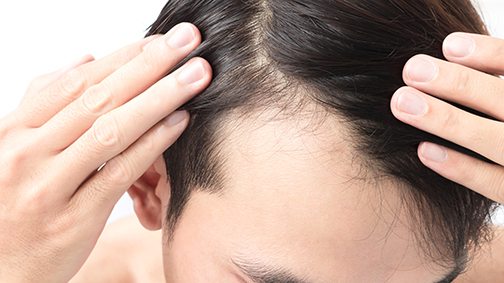Time can be a person’s worst enemy and proof of that lies in the receding hairline of men as they grow older. The hairline of most men starts receding as soon as they hit puberty. And it especially starts becoming notable when a man enters his thirties.
However, advancements in medical sciences have resulted in this condition being treated with medicines or surgery.
But make sure to look at pictures before and after of hair transplants in the crown area, if you do decide to go the surgery route.
Before we get to the treatment though, we would like to discuss briefly the causes of a receding hairline.
Causes of a Receding Hairline
Hereditary
A receding hairline in men can be a hereditary trait, passed down from generation to generation. A family history of baldness and hair loss could mean that you also possess the same male hormones that have made the hair follicles of the men in your family too sensitive.
Hormone changes
Most women don’t have to deal with a receding hairline. However, in some special circumstances, changes in hormones can cause hair loss and even a receding hairline for women. For example, Menopause can be a reason for the thinning of hair, though in most cases the hairline remains unaffected.
How to Lower the Hairline – 2 Core Methods
Method 1: Medication
As we mentioned before, advancements in the field of medical science have made it possible for you to overcome your hair loss and hairline problems through the use of medication.
If you’re suffering from an immune disorder then the drug prednisone can aid in suppressing your overactive immune response. Moreover, if hair loss is your major issue, then medications such as minoxidil (Rogaine) can slow down or even reverse the process.
This medication can be rubbed onto the patchy parts of your scalp. However, it could have some possible side effects which include scalp irritation.
Another thing you need to know is that even though minoxidil can restore hair loss in the smaller sections of your scalp, it might not be as effective in larger areas.
Another less recommended pill that may induce hair growth is finasteride. But if it isn’t used under professional supervision, it also has some serious side effects that include reduced sex drive and a high probability of prostate cancer.
This is why you shouldn’t take any of these without the approval of a doctor, preferably a dermatologist.
Method 2: Hair Transplant Surgery
If all else fails, you do have the option of getting hair restorative or hair transplant surgery. But this treatment can be quite costly.
In the US alone it can cost up to $13,610, and it becomes even more expensive in countries like Australia and Canada. The reason for the treatment’s high cost is the delicate nature of the procedure.
It involves the removal of small sections of the scalp and hair follicles on the back of the head. It transplants them to the upper part of the forehead, among other places that have ceased to grow hair, to increase the hair growth in that area.
These pieces of your scalp can continue to grow hair in their new positions, effectively increasing your overall hair growth.
You don’t have to worry about the areas that supplied the plugs either as they’ll continue to grow hair normally as well.
Final Thoughts
We’d like to reiterate that consulting a dermatologist should be your first step in dealing with your hair loss. Or receding hairline problem because self-diagnosing can further worsen the situation. It result in you reaching the point of no return.
Similarly, there is no instant cure for a receding hairline and the treatment takes time so patience needs to be practiced.
Until then, remain calm and own your identity, and in turn, keep your mental peace intact until you overcome your hair problems.



